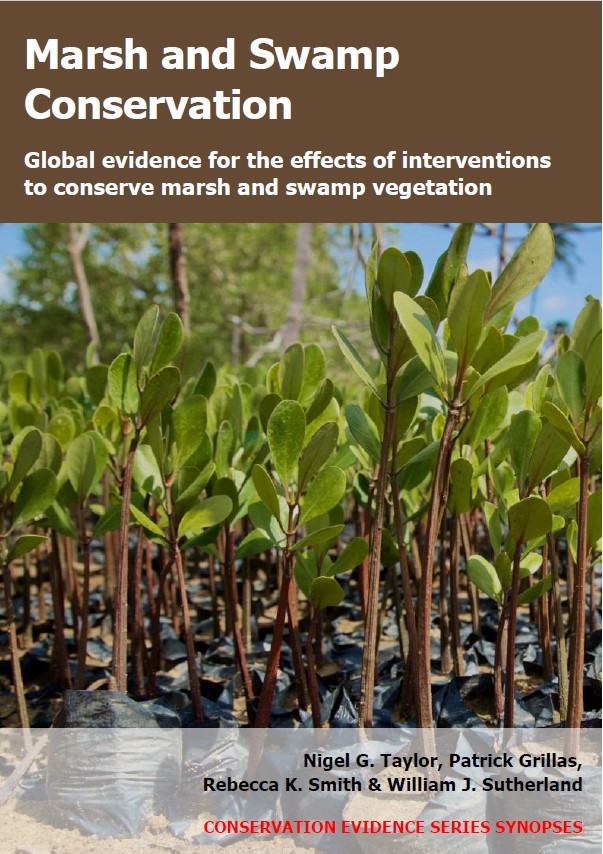Deposit soil/sediment to form physical structure of freshwater marshes
-
Overall effectiveness category Unknown effectiveness (limited evidence)
-
Number of studies: 2
View assessment score
Hide assessment score
How is the evidence assessed?
-
Effectiveness
50% -
Certainty
34% -
Harms
0%
Study locations
Supporting evidence from individual studies
A site comparison study in 1979–1985 alongside a river in Virginia, USA (Landin et al. 1989) reported that a freshwater marsh created by depositing dredged sediment developed vegetation of similar height and density to three natural marshes within four years, but that vegetation cover remained lower than natural marshes for 10 years. Statistical significance was not assessed. Four years after wetland creation, vegetation was 112 cm tall (vs natural wetlands: 99–112 cm) and there were 212 plant stems/m2 (vs natural: 183–380 stems/m2). However, in the created marsh, vegetation cover was only 47% (vs natural: 65–91%). Data were also reported 10 years after marsh creation. Height and density were still within the range of natural marshes, and cover was still lower in the created marsh than natural marshes (see original paper for data). Methods: In 1975, dredged sediment was deposited behind a sand embankment in the James River channel. The dike was breached after depositing the sediment to allow tidal influx. Vegetation was surveyed along permanent transects in the created marsh and three adjacent natural marshes in 1979, 1982 and 1985.
Study and other actions testedA replicated, paired, site comparison study in 2003 around three freshwater lakes in the Netherlands (Sollie et al. 2008) reported that marshes created by depositing sand contained fewer plant community types than natural marshes, but found that they had similar vegetation biomass. After 8–16 years, the created marshes contained three distinct plant community types, compared to four in natural marshes. Unlike natural marshes, created marshes did not contain pure stands of cattails Typha spp. or common reed Phragmites australis. However, the above-ground vegetation biomass in sampled plots did not significantly differ between created marshes (1.5 kg/m2) and natural marshes (1.6 kg/m2). Methods: In August 2003, vegetation was surveyed around the margins of three connected freshwater lakes. One created marsh and one natural (mature) marsh were surveyed in each lake. Created marshes had been formed by depositing sand to a suitable elevation for plants to colonize. Vegetation was cut from three or four 400-cm2 plots/marsh, distributed across the plant community types present, then dried and weighed.
Study and other actions tested
Where has this evidence come from?
List of journals searched by synopsis
All the journals searched for all synopses
This Action forms part of the Action Synopsis:
Marsh and Swamp Conservation
Marsh and Swamp Conservation - Published 2021
Marsh and Swamp Synopsis





)_2023.JPG)














